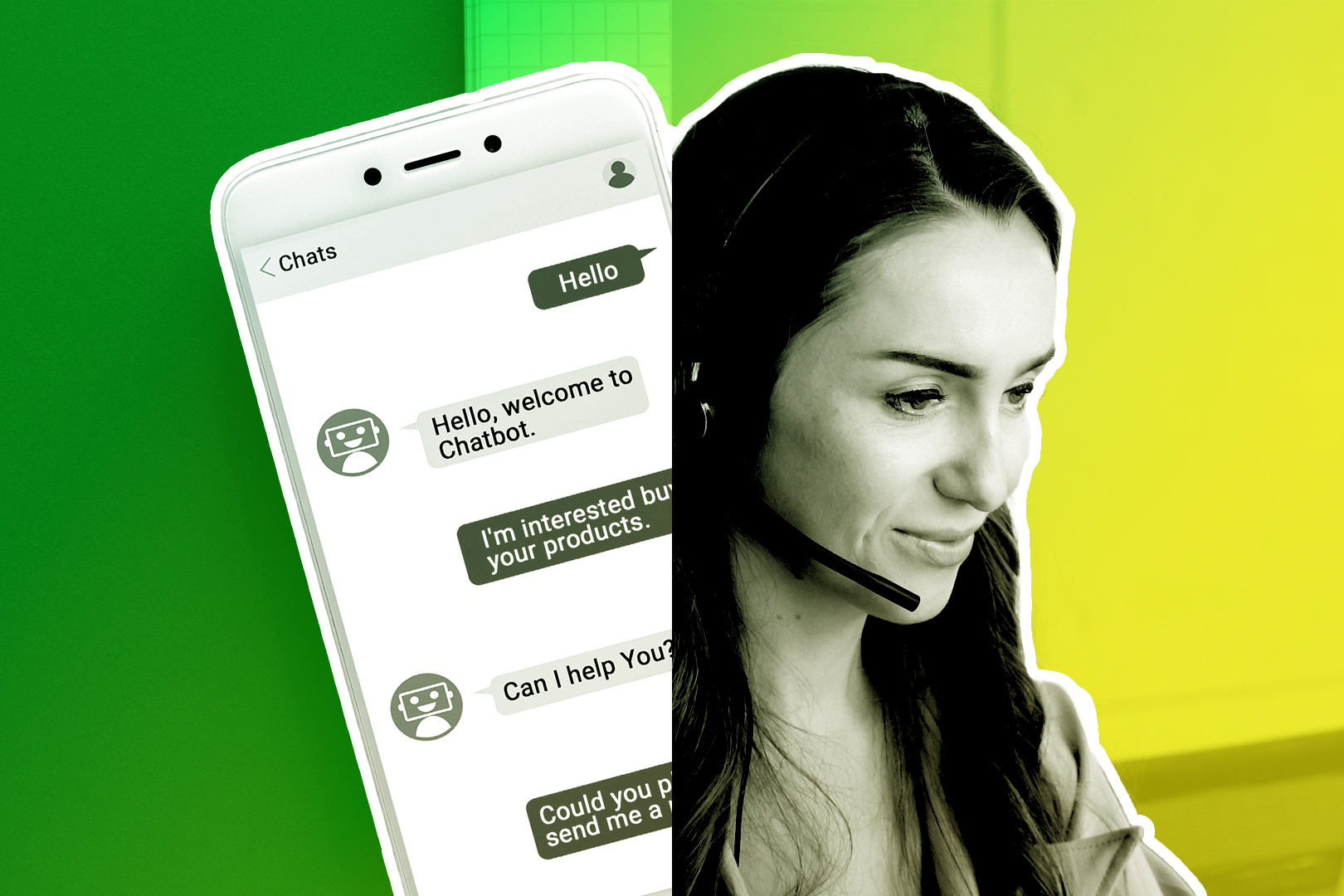Wenn Sie nicht gerade jemanden anrufen, dessen Büro in Flammen steht, ist die Wahrscheinlichkeit groß, dass er Zeit für Sie hat.
In neun von zehn Fällen ist "Ich habe keine Zeit" nur Höflichkeitsfloskel für "Sie haben im Moment keine Priorität". Wenn potenzielle Kunden wirklich beschäftigt sind, legen sie einfach auf - oder ignorieren Ihren Anruf ganz.
Wie machen Sie also Ihre Kaltakquise zu einer Priorität?
Beweisen Sie, dass Sie ihre Zeit wert sind
Wenn potenzielle Kunden wüssten, dass sie für jeden $1, den sie für Ihr Produkt oder Ihre Dienstleistung ausgeben, $8 verdienen könnten, würden sie Ihren Anruf trotzdem vermeiden?
Nein, natürlich nicht.
Bei Kaltakquisegesprächen müssen Sie früh und oft den Nutzen aufzeigen.
Wie Vertriebsveteran Anthony Iannarino sagt,
"Je größer der wahrgenommene Wert ist, desto größer ist die Wahrscheinlichkeit, dass Sie ein Engagement eingehen, das Sie gemeinsam voranbringt.
Lassen Sie uns also über zwei Phasen des Verkaufsprozesses sprechen, in denen Sie am ehesten die Antwort "Ich habe keine Zeit" hören - und darüber, wie Sie Ihren Interessenten einen Mehrwert bieten können.
Und wenn Sie E-Mails den Anrufen vorziehen, stellen Sie sicher, dass Sie gut gestaltete B2B-Kalt-E-Mail-Vorlagen zur Hand haben, und zum Glück haben wir einen Artikel, der Ihnen 12 solcher Vorlagen bietet!

Frühzeitiges Einspruchsmanagement
Niemand mag es, kalt angerufen zu werden, daher wird man oft sofort mit dem Einwand konfrontiert, man habe keine Zeit. Während der Durchschnittsverkäufer diese Art von reflexartiger Reaktion vielleicht als Beleidigung auffasst, sieht ein guter Verkäufer dies als Gelegenheit, das Gespräch voranzubringen.
Versuchen Sie, diesem Einwand mit einem einfachen, zweigleisigen Ansatz zu begegnen.
1. Zeigen Sie, dass Sie die Zeit des Interessenten schätzen
Dieses Gespräch könnte folgendermaßen ablaufen:
Diese Antwort deckt einen großen Bereich ab:
- Erstens erkennen Sie den Wert ihrer Zeit an und können sich in ihre Situation hineinversetzen - sie bekommen wahrscheinlich jeden Tag einen Haufen beschissener Anrufe.
- Außerdem bieten Sie ihnen einen Wettbewerbsvorteil. Andere potenzielle Kunden erkennen vielleicht nicht den Wert Ihres Produkts oder Ihrer Dienstleistung, aber die klugen erkennen ihn.
- Und Sie gehen noch einen Schritt weiter, indem Sie erklären, wie wenig Zeit es braucht, um diesen Wettbewerbsvorteil zu erlangen.
Wenn Sie höflich, charmant und selbstbewusst sind, werden Ihnen die meisten potenziellen Kunden drei Minuten mehr Zeit geben, um Ihre Argumente vorzubringen.
Psst... Sie möchten eine fundierte Entscheidung für Ihre Kaltakquise treffen? Unser Überblick über die 8 besten Verkaufs-Headsets hat für Sie gesorgt.
2. Pitch auf ihre Top-Prioritäten
Nachdem Sie sich ein paar Minuten Zeit genommen haben, stellen Sie diese Frage, um den Bedarf des Interessenten zu ermitteln und Ihr Fachwissen zu demonstrieren:
An diesem Punkt ist es wichtig, genau zuzuhören. Wenn Ihre oberste Priorität nicht mit der des Kunden übereinstimmt, stellen Sie Folgefragen. Je mehr Kontext Sie haben, desto besser können Sie Ihr Angebot auf die spezifischen Bedürfnisse des Kunden abstimmen.
Vielleicht möchten Sie eine Liste von Produktmerkmalen aufzählen, um diese Prioritäten zu erfüllen, aber es ist viel wichtiger, Fragen zu stellen.
Je mehr Gelegenheiten sie haben, über ihre Ziele zu sprechen, desto wahrscheinlicher ist es, dass sie in der Leitung bleiben. Das gibt Ihnen die Möglichkeit, besser zu verstehen, wofür sie Zeit haben, und es zeigt, dass Sie sich wirklich für ihren Erfolg einsetzen.
Kommen wir nun zum Umgang mit dem Einwand "Ich habe keine Zeit" in den späteren Phasen eines potenziellen Geschäfts.

Verwaltung von Einsprüchen in der Spätphase
Die Aussage "Ich habe keine Zeit" kurz vor Abschluss eines Geschäfts ist etwas völlig anderes. Der frustrierendste Teil ist nicht, dass die potenziellen Kunden Sie ignorieren - sie haben Sie nicht ignoriert... bis jetzt. Sie haben telefoniert, E-Mails ausgetauscht, eine Produktdemo gegeben.
Sie beide haben viel Zeit in dieses Geschäft investiert. Und dann kommt aus heiterem Himmel der Einwand, dass Sie keine Zeit haben.
Warum ist das so? Weil Sie einen Interessenten gefunden haben, der bereit ist, zuzuhören, ohne zu 100 Prozent von Ihrem Wert überzeugt zu sein.
Sie hatten die Zeit. Sie sind sich nur nicht sicher, ob du noch mehr davon verdienst.
Wenn Sie diesen Einwand so spät im Spiel hören, haben Sie wahrscheinlich einen von zwei Fehlern gemacht:
- Sie haben ineffektiv geworben: Sie haben nicht früh genug gezeigt, dass Sie wertvoll sind, und haben es nicht geschafft, sich durchzusetzen, so dass der potenzielle Kunde schließlich aufgegeben hat.
- Sie haben sie gut verkauft - anfangs: Sie waren zu Beginn des Verkaufsprozesses der Meinung, dass sich Ihre Dienstleistungen für sie lohnen könnten, aber am Ende des Gesprächs hatten Sie sie vom Gegenteil überzeugt.
Es ist noch Zeit, ein Geschäft zu retten, aber verlassen Sie sich nicht auf eine E-Mail. Nehmen Sie stattdessen den Hörer in die Hand und sagen Sie:
Die meisten potenziellen Kunden werden sich mit der "Es liegt nicht an Ihnen, sondern an mir "-Routine zurückziehen. Die Menschen sind darauf trainiert, höflich zu sein, also werden sie sich Ausreden einfallen lassen, die nichts mit Ihnen zu tun haben. Aber Sie müssen zeigen, dass Sie selbst für die Kommunikationspanne verantwortlich sind. Das könnten Sie als nächstes sagen:
Diese Art von Verletzlichkeit schafft Vertrauen und ermutigt potenzielle Kunden, Ihre Ehrlichkeit zu erwidern, was Sie vor allem wollen. Nur dann können Sie einen Einwand überwinden und das Problem erkennen.
Dies ist die letzte Chance, Ihren Wert zu beweisen, also legen Sie alles auf den Tisch. Zeigen Sie ihnen, dass Ihnen ihre Prioritäten wirklich am Herzen liegen - und dass Sie davon überzeugt sind, dass Ihr Produkt oder Ihre Dienstleistung einen echten Mehrwert bieten kann.
Wenn Sie sie absolut nicht umstimmen können, treten Sie einen Schritt zurück. Verweisen Sie sie an ein anderes Unternehmen, das ihren Bedürfnissen entspricht, und gehen Sie weiter. Wenn Sie dies gut machen, werden Sie das nächste Mal, wenn der Kunde nach einer neuen Lösung sucht, ganz oben auf der Liste stehen.
Letztendlich geht es darum, einen Mehrwert zu bieten
Gute Verkäufer drängen potenzielle Kunden nicht zum Kauf von Produkten und Dienstleistungen - sie helfen ihnen, einen Wert zu entdecken, der ihnen sonst entgangen wäre. Das ist das Geheimnis der Kaltakquise. Wenn potenzielle Kunden den Wert verstehen, den Sie bieten, und Sie während des gesamten Verkaufsprozesses auf ihre Prioritäten eingehen, werden sie sich immer Zeit für Ihren Anruf nehmen.
Für die meisten Vertriebsteams besteht die größte Herausforderung darin, potenzielle Kunden dazu zu bringen, mit ihnen am Telefon zu sprechen. Die Mitarbeiter verschwenden so viel Zeit mit dem Abhören von Freizeichen, Klingeltönen und Sprachnachrichten, dass sie nicht genug Zeit haben, um mit echten Interessenten zu sprechen.
Mit dem Predictive Dialer von Close, der direkt in Ihr CRM integriert ist, können Sie nahtlos von einem Verkaufsgespräch zum nächsten übergehen und die Wartezeit dazwischen minimieren. Jetzt müssen Sie sich darauf konzentrieren, dass diese Gespräche erfolgreich sind. Die in diesem Artikel vorgestellten Tipps werden Ihnen dabei helfen.












